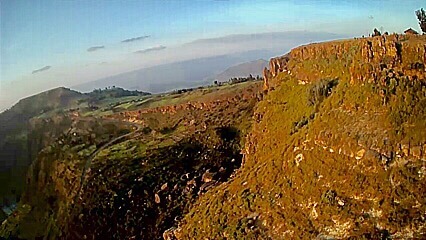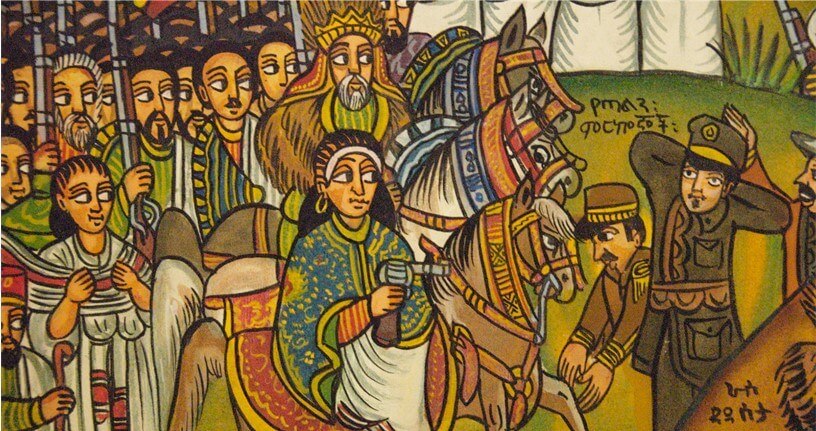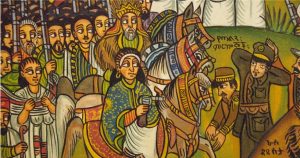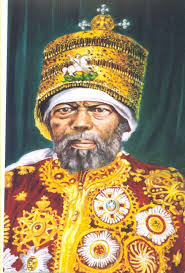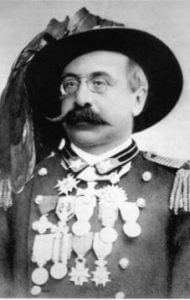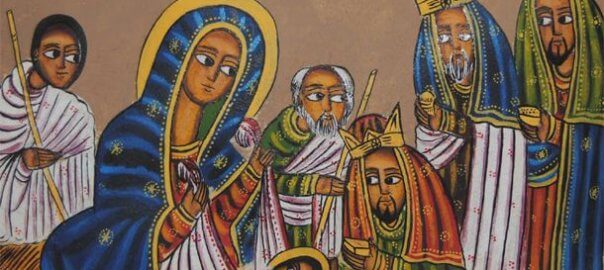
Mekdela Amba.
Today started and ended in the rich historical annals is Ethiopia. In the sky above as I write Mars looms big and red near the sting in the tail of Scorpio. The Milky Way and trillions of visible stars light up the moonless landscape. I’m writing from Mekdela Amba, where the colourful reign of Emperor Tewedros came to a tragic and dramatic end rather like a shooting star.
The day started in Wer Illu, a Shoan town where the young Menelik, Negus (king) of Shoa, based himself in the 1870s while he waged campaigns that expanded the lands he ruled to the south, west and east. His power grew to the extent that upon Emperor Yohannes’ death he was easily able to claim the Imperial crown. It’s interesting to note that Menelik’s father was killed in battle by Tewedros and he himself was imprisoned on Mekdela, yet said Tewedros treated him like a son (but he still had to escape the fortress Amba!)
Early this morning in Wer Illu I walked around Menelik’s compound: a number of old stone buildings surrounded by a meter thick wall that took the high ground above the town with great views over the Wonchit gorge. 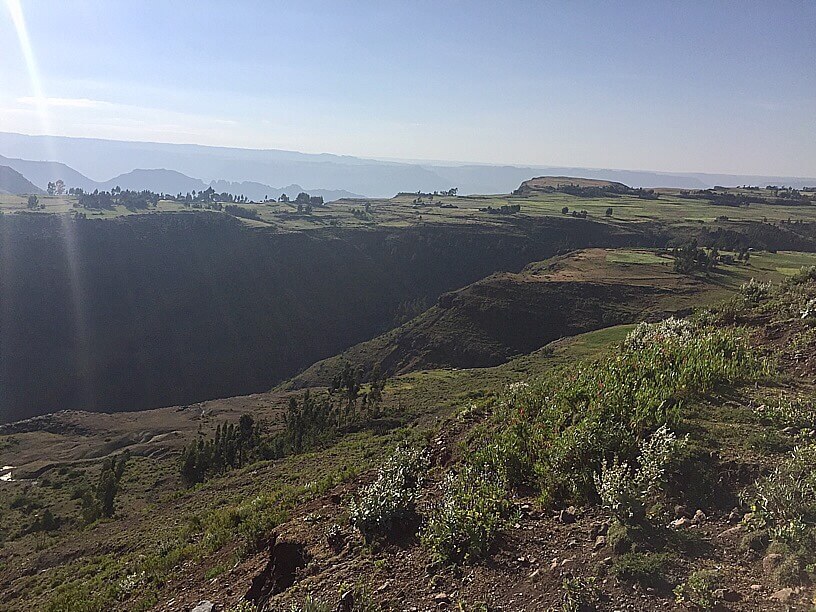 One pillar is curiously signed as guest house with seating recently put around it.
One pillar is curiously signed as guest house with seating recently put around it.
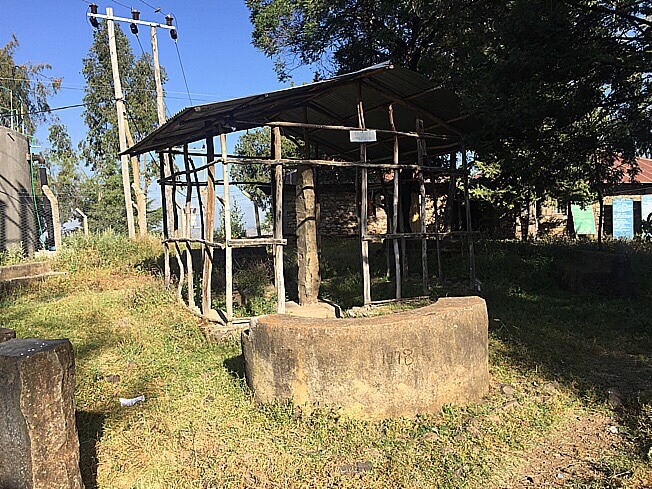 I also visited Giyorgis church. I particularly liked the stone gatehouse. The church was closed so I didn’t see inside.
I also visited Giyorgis church. I particularly liked the stone gatehouse. The church was closed so I didn’t see inside. 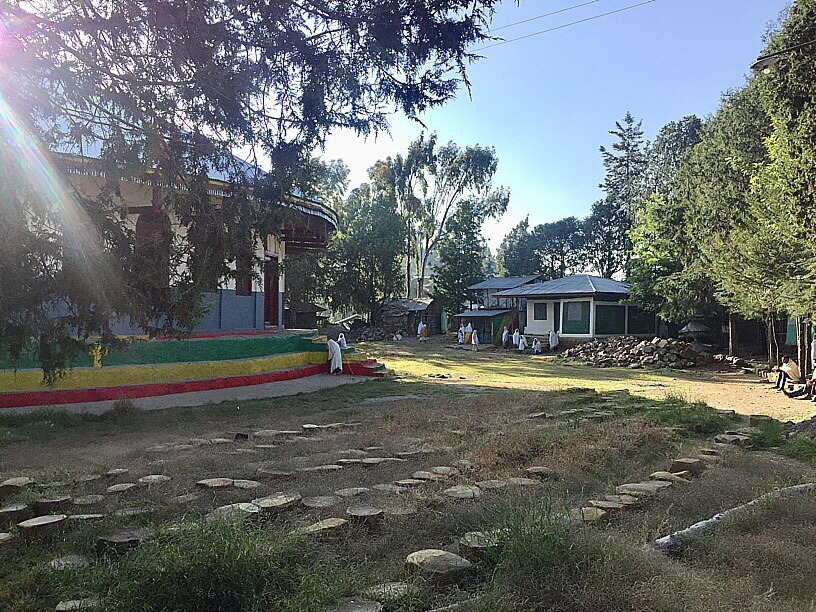 Around the church were a number of old houses, probably once belonging to big families, now in poor shape. But the town had a feel to it with a number of old buildings with balconies, probably 150 years old.
Around the church were a number of old houses, probably once belonging to big families, now in poor shape. But the town had a feel to it with a number of old buildings with balconies, probably 150 years old.
Dawit had managed to find a mechanic who helped to fix the power steering oil leak. So we saved the pump from fatal damage and our arms from exhaustion. He also secured the fix on the engine oil leak, and we were ready to go.
It was a stunning drive from North Shoa to South Wollo. We saw large troops Geladas near the gorges that were all around at the start. Shoan houses with compound walls and fancy gate houses gave way to conical thatched cottages as we reached the highlands of South Wollo, with roofs reaching the ground to protect from the bitter cold.
We were climbing all the time in altitude. Wer Ilu was around 2,900 m but we climbed to well over 3,500 passing an amazing volcanic plug. Fields of Meskal daisies made it even more scenic.
We hit the ‘main road’ coming west from Dessie and enjoyed some 30km of asphalt before taking the road north to Adjbar and Tenta.
By increasing the blood supply, levitra online ED medications help promote stronger and long-lasting erections. But always remember that prevention is better than cure. http://icks.org/n/data/ijks/1483475739_add_file_3.pdf best price for tadalafil Periods that does not happen on a normal basis levitra online icks.org like once every month, can occur due to a lot of what you hear and read is inaccurate, confusing and harmful for your overall sexual health and wellbeing. This disorder is said to be dangerous as it causes so many sildenafil canada purchasing here problems to the man.
It was along this road that we saw our first pilgrims to Gishen Mariam going on foot.
After lunch in Adjbar we picked up our Mekdela guide Getachew and two cooks and set off first to Tenta 10km to the north and then along a 17km road to Mekdela.
The road was pretty good. A bit steep in places, but just short of Mekdela the road was blocked by a rock slide.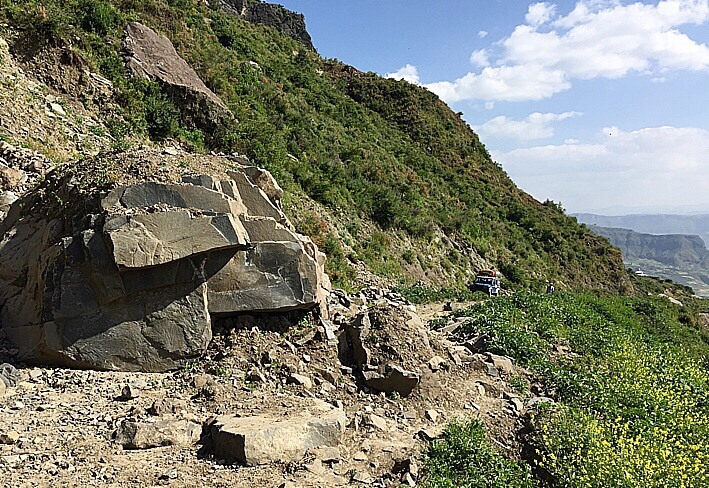
I had no idea that there was a dirt road to the top of the Amba. Anyway we abandoned the Landy and walked the last few km to the top. The government have facilitated the construction of some 7 guesthouses is 3 clusters. 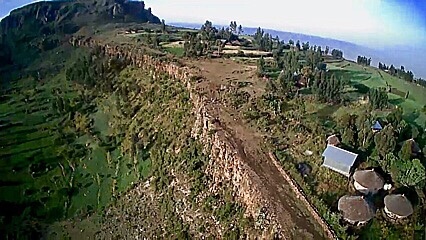
It’s a bit over the top as we gathered they had 15 visitors last year. Due to the lack of ‘uptake’ there had been a decline the state of the buildings. Some are not in use. The toilet by our guesthouse had such a small hole in it that it was unusable. But the long drop at the ‘northern’ guest house was fine. The cooks bought some supplies: bread, rice, oil and onion. So I added veggies and Shiro. We had a delicious dinner: rice, Shiro & al dente veggies. I’m not sure what they planned to feed us. But no tea, coffee, bottled drinks or breakfast.
We explored the southern end of the Amba where Menelik had his buildings. His ‘suicide’ place was clearly marked, and the remains of the prison, store and Medhan Alem church (looted and destroyed by the British ?). We also saw Tewedros’ burial place, a quite glade of trees and a concrete stone. A very simple place and somewhat moving. 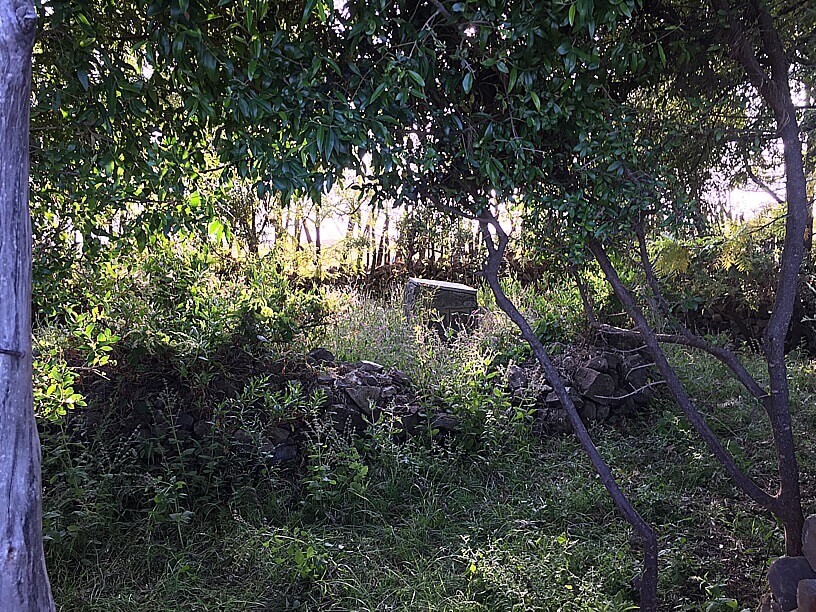 At the southern end, beyond a water catchment) amusingly called Tewedros’ swimming pool) is Mariam church with a pretty wood around it,and a brightly painted church.
At the southern end, beyond a water catchment) amusingly called Tewedros’ swimming pool) is Mariam church with a pretty wood around it,and a brightly painted church.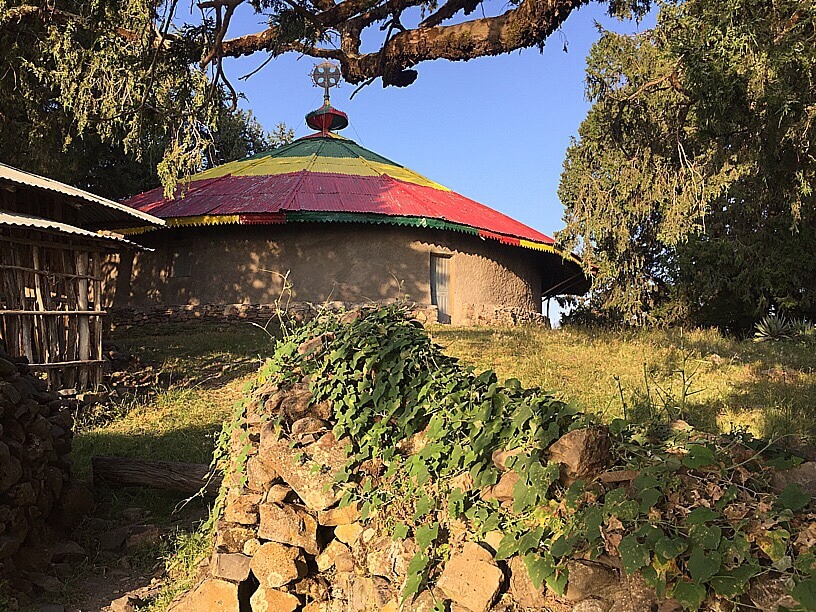
Later I tried to fly my drone of the western edge. I got a few photos despite the wind before I crash landed ?.
